Poisonous Berries
CHOP's Poison Control Center receives numerous calls about children who have eaten wild berries.
If your child has swallowed something that you suspect might be poisonous, call the Poison Control Center at 1-800-222-1222.
The most commonly found poisonous berries in the mid-Atlantic region include:
American Bittersweet
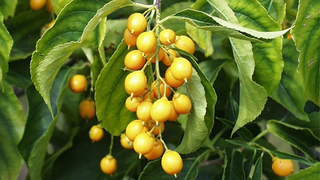
American bittersweet is a woody vine often used in fall wreaths and dried flower arrangements. Its orange-yellow berries are three-part capsules with a seed in each part. They grow at the point where the leaves join the stems. Eating American Bittersweet berries can cause stomach upset and diarrhea.
Cotoneaster
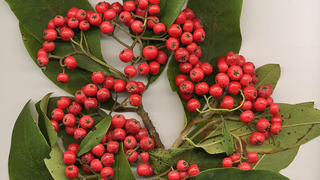
Cotoneaster is an evergreen shrub that tends to grow upright with long branches rather than as a bush. Its bright orange berries grow in clusters so thick that the branches cannot be seen. Cotoneaster is poisonous in large amounts and may cause trouble breathing, weakness and seizures.
Holly
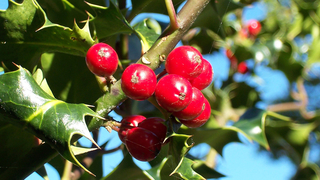
Holly is an evergreen shrub that can grow to be a tree. The leaves are stiff with sharp points and may be edged with white. The berries are hard and bright red. Eating more than three holly berries can cause severe and prolonged nausea, vomiting and diarrhea, as well as drowsiness.
Juniper

Juniper is an evergreen tree often used in holiday decorations. Its blue-purple berries have been used in recipes for flavoring. The safety of juniper berries as a food item is questionable since abdominal cramps and diarrhea have been reported when large amounts were eaten.
Pokeweed
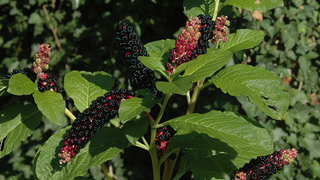
Pokeweed can grow up to five feet tall and has thick green-purple stems similar to rhubarb. Pokeweed berries (also known as ink berries) grow in clusters, like grapes, and ripen from white to green to rose and finally purple. Ripe berries stain the hands purple when crushed. Eating over 10 berries may cause headache, nausea, vomiting, abdominal pain and severe diarrhea. The leaves and roots of the plant have been used in herbal preparations to induce vomiting.
Yew
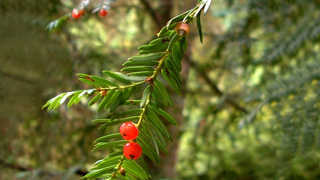
Yew is an evergreen shrub with soft bright green needles similar to the "Christmas tree." The berries are soft red capsules with a hard green stone in the center. Eating more than three yew berries can cause vomiting, nausea, abdominal pain, dizziness, difficulty breathing and changes in heart rate.
Awareness and prevention
Awareness and prevention are the best defenses against the accidental ingestion of poisonous berries and seeds. Here are a few steps you can take to help protect your child.
Know the name of the plants growing in and near your home. If possible, write the scientific and common names of the plants on a weather-proof tag and attach it to the plant.
If you’re not sure of this information, take a cutting (a 6- to 8-inch piece that includes leaves, berries and flowers) from the shrub to a garden center, nursery or florist for identification.
If an accidental ingestion does happen, this information will be very helpful to the Poison Control Center.
Check your children's play areas often for growing weeds and remove them before your children find them. Clean up fallen seeds or pods from nearby trees.
For removal of poison ivy, oak or sumac plants, use only commercial herbicides intended for these plants and follow the manufacturers' directions carefully.
Consider using artificial berries for indoor decorations as an alternative to live berries, which may be poisonous.